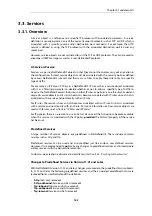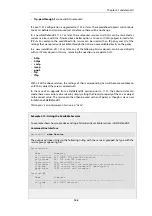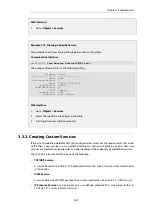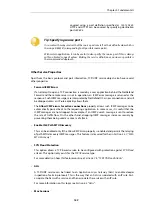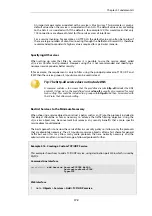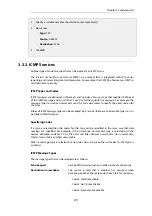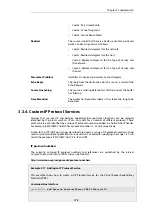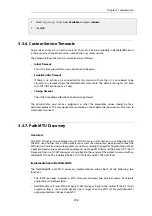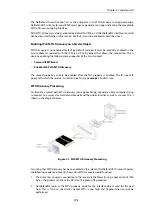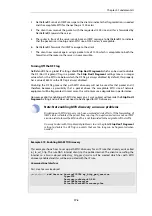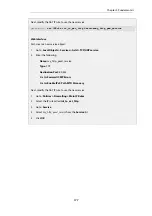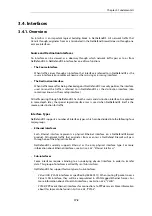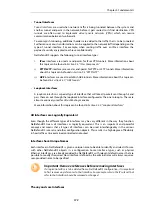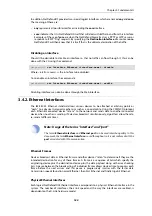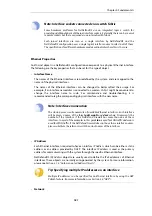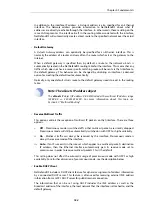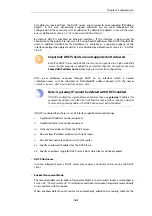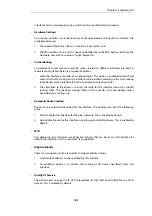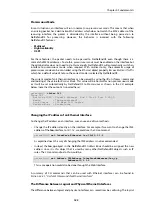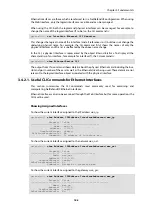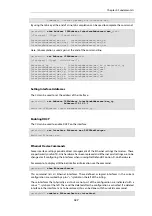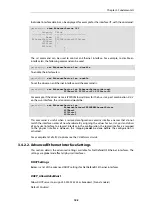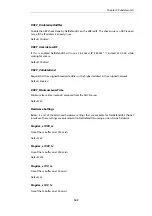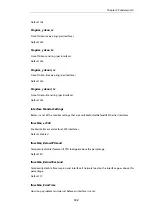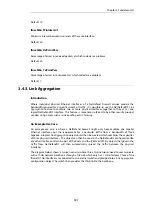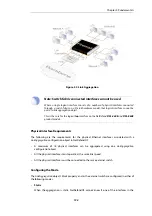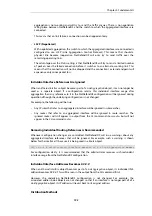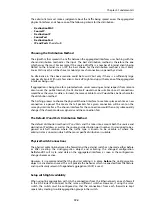
•
Tunnel Interfaces
Tunnel interfaces
are used when network traffic is being tunneled between the system and
another tunnel end-point in the network, before it gets routed to its final destination. VPN
tunnels are often used to implement
virtual private networks
(VPNs) which can secure
communication between two firewalls.
To accomplish tunneling, additional headers are added to the traffic that is to be tunneled.
Furthermore, various transformations can be applied to the network traffic depending on the
type of tunnel interface. For example, when routing traffic over an IPsec interface, the
payload is usually encrypted to achieve confidentiality.
NetDefendOS supports the following tunnel interface types:
i.
IPsec interfaces are used as end-points for IPsec VPN tunnels. More information about
this topic can be found in
Section 9.3, “IPsec Components”
ii.
PPTP/L2TP interfaces are used as end-points for PPTP or L2TP tunnels. More information
about this topic can be found in
iii.
GRE interfaces are used to establish GRE tunnels. More information about this topic can
be found in
•
Loopback Interfaces
A
loopback interface
is a special type of interface that will take all packets sent through it and
pass them on out through the loopback interface configured as the one to loop to. These are
almost exclusively used for
Virtual Routing
scenarios.
More information about this topic can be found in
Section 3.4.9, “Loopback Interfaces”
All Interfaces are Logically Equivalent
Even though the different types of interfaces may be very different in the way they function,
NetDefendOS treats all interfaces as logically equivalent. This is an important and powerful
concept and means that all types of interfaces can be used interchangeably in the various
NetDefendOS rule sets and other configuration objects. This results in a high degree of flexibility
in how traffic can be examined, controlled and routed.
Interfaces have Unique Names
Each interface in NetDefendOS is given a unique name to be able to identify and select it for use
with other NetDefendOS objects in a configuration. Some interface types, such as physical
Ethernet interfaces, are already provided by NetDefendOS with relevant default names that are
possible to modify if required. New interfaces defined by the administrator will always require a
user-provided name to be specified.
Important: Remove references before removing interfaces
If a logical interface is to be deleted from a NetDefendOS configuration, it is important
to first remove any references to that interface. For example, rules in the IP rule set that
refer to that interface should be removed or changed.
The any and core Interfaces
Chapter 3: Fundamentals
179
Summary of Contents for NetDefendOS
Page 30: ...Figure 1 3 Packet Flow Schematic Part III Chapter 1 NetDefendOS Overview 30 ...
Page 32: ...Chapter 1 NetDefendOS Overview 32 ...
Page 144: ...Chapter 2 Management and Maintenance 144 ...
Page 284: ...Chapter 3 Fundamentals 284 ...
Page 392: ...Chapter 4 Routing 392 ...
Page 419: ... Host 2001 DB8 1 MAC 00 90 12 13 14 15 5 Click OK Chapter 5 DHCP Services 419 ...
Page 420: ...Chapter 5 DHCP Services 420 ...
Page 573: ...Chapter 6 Security Mechanisms 573 ...
Page 607: ...Chapter 7 Address Translation 607 ...
Page 666: ...Chapter 8 User Authentication 666 ...
Page 775: ...Chapter 9 VPN 775 ...
Page 819: ...Chapter 10 Traffic Management 819 ...
Page 842: ...Chapter 11 High Availability 842 ...
Page 866: ...Default Enabled Chapter 13 Advanced Settings 866 ...
Page 879: ...Chapter 13 Advanced Settings 879 ...

